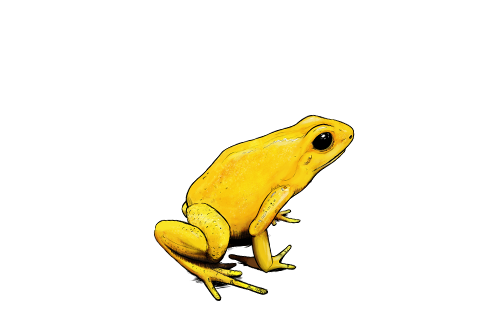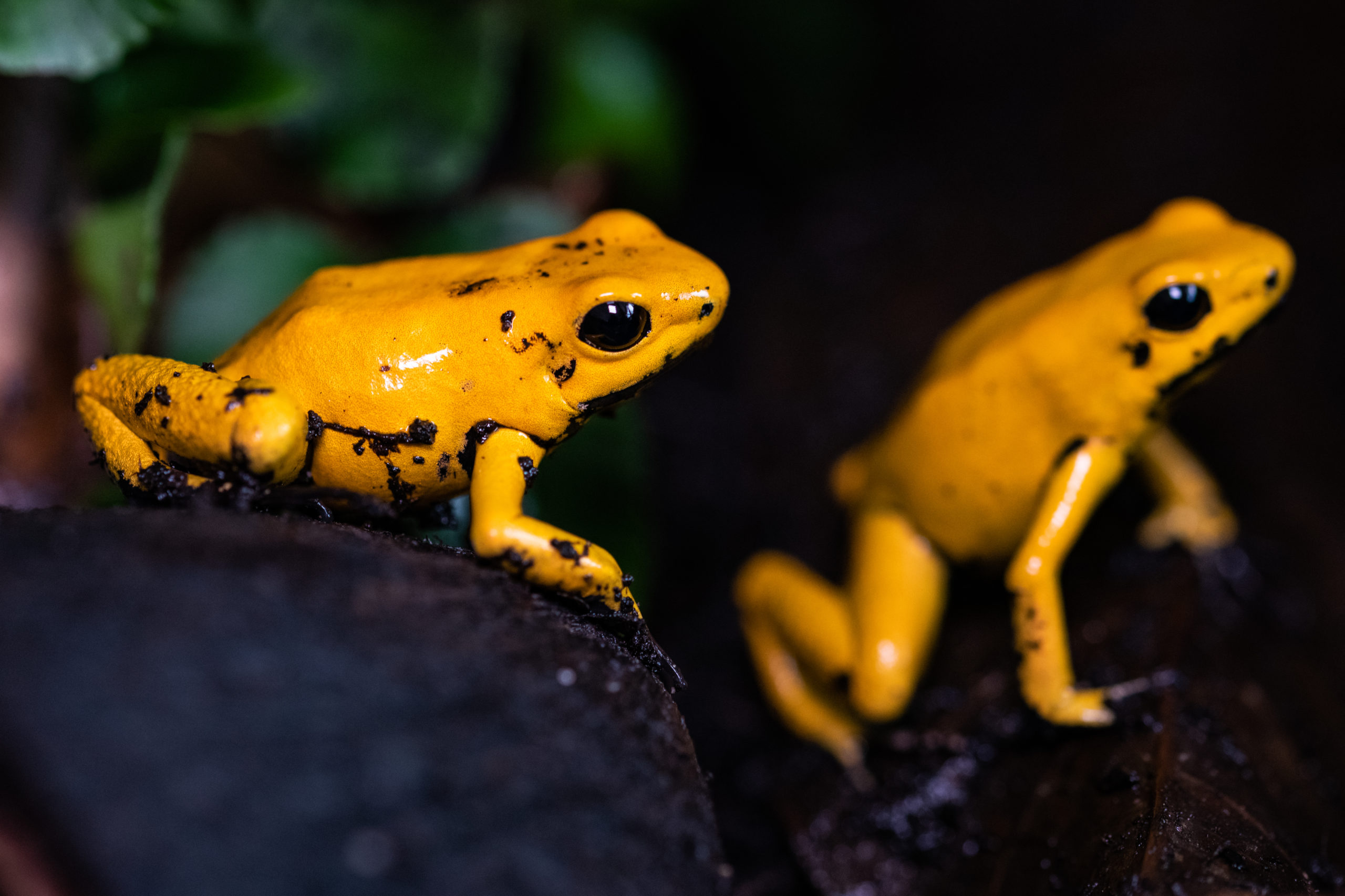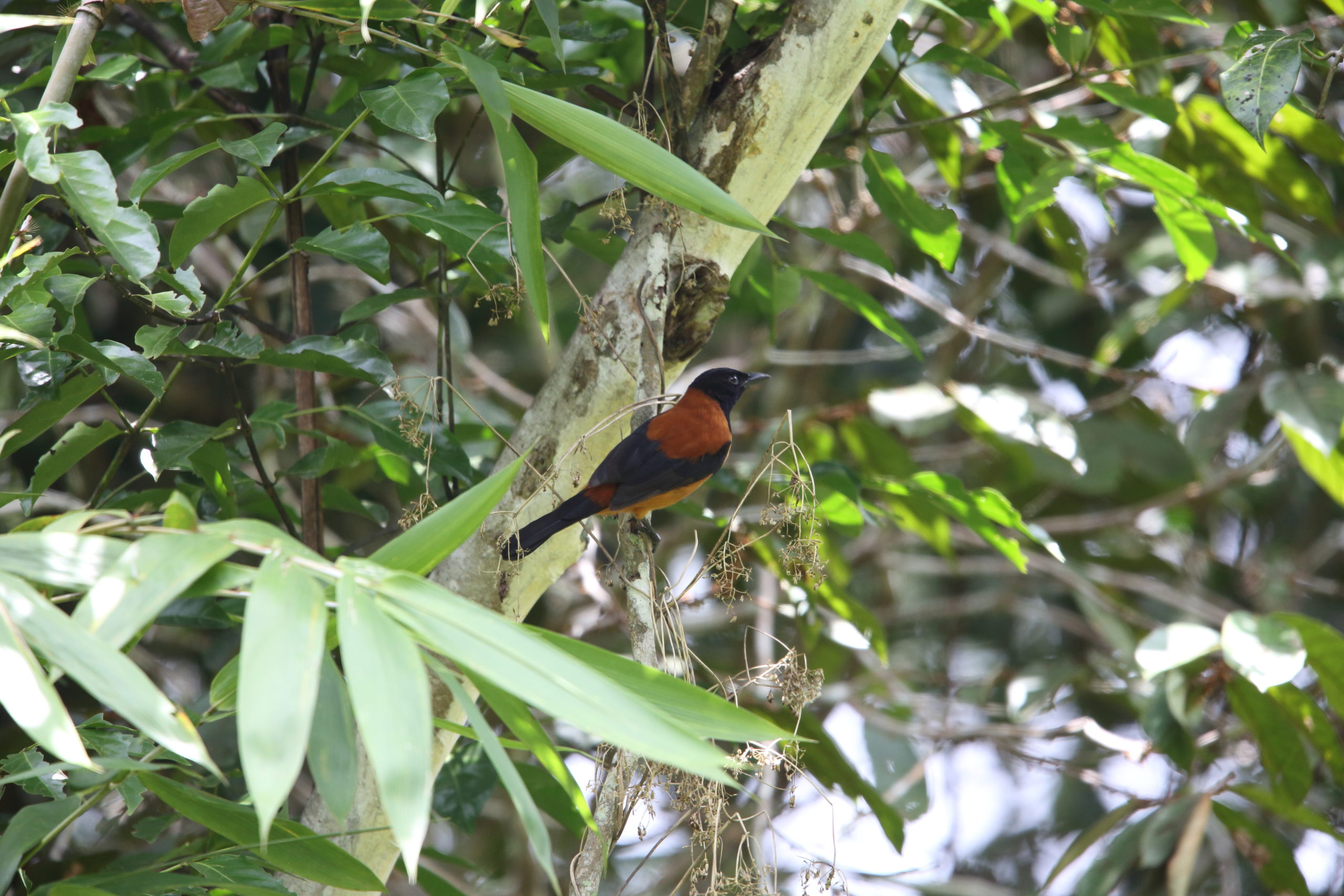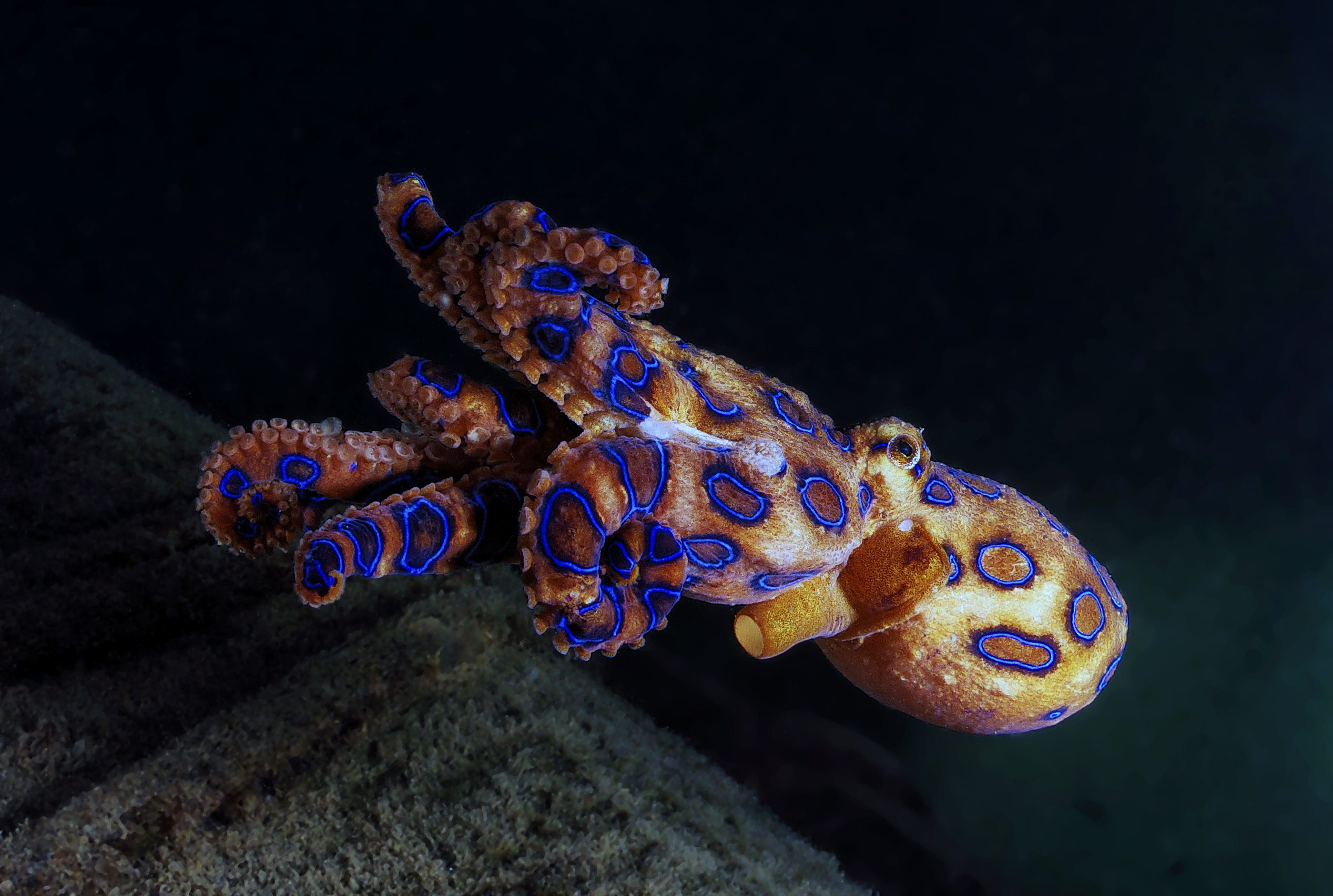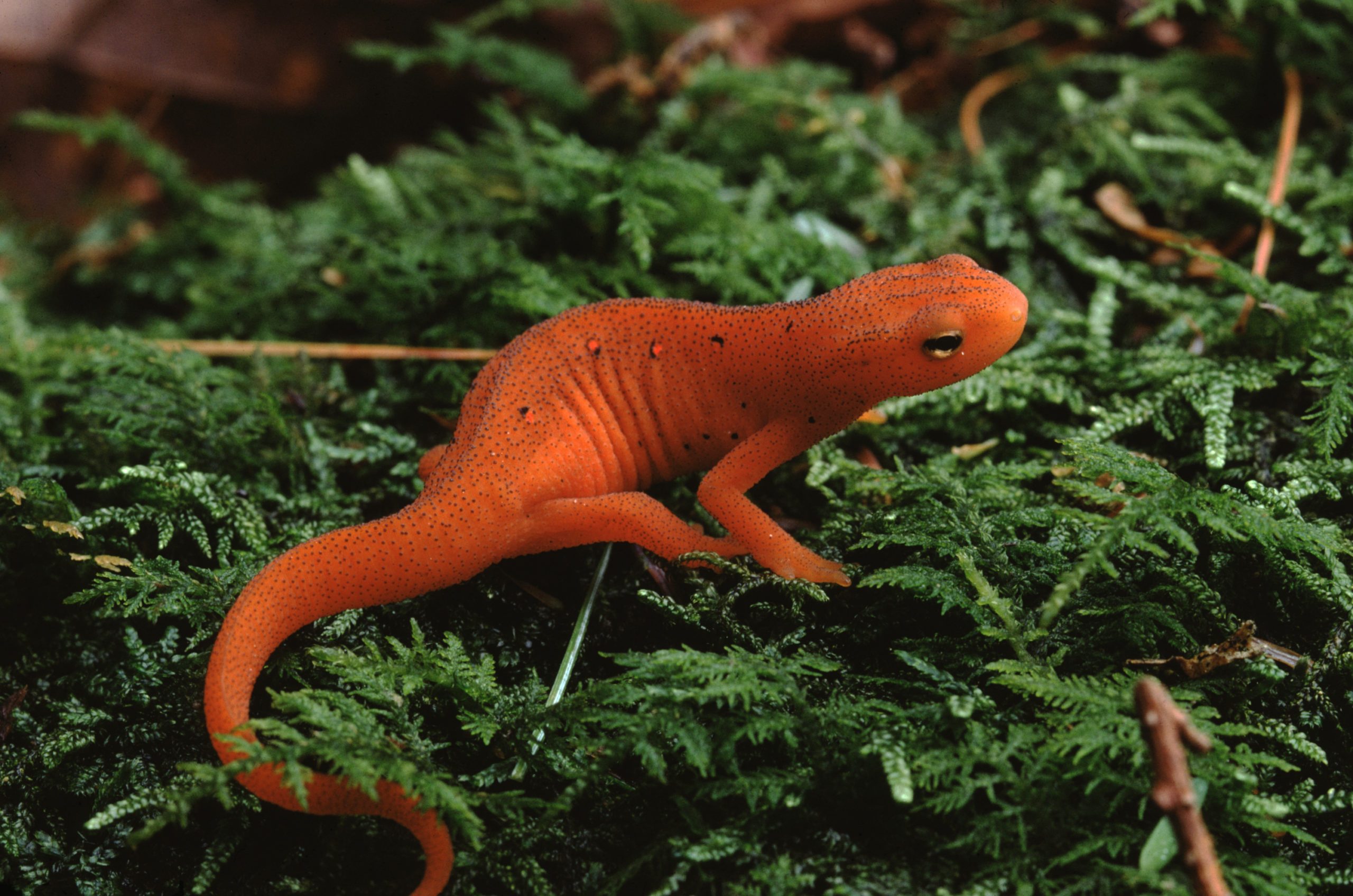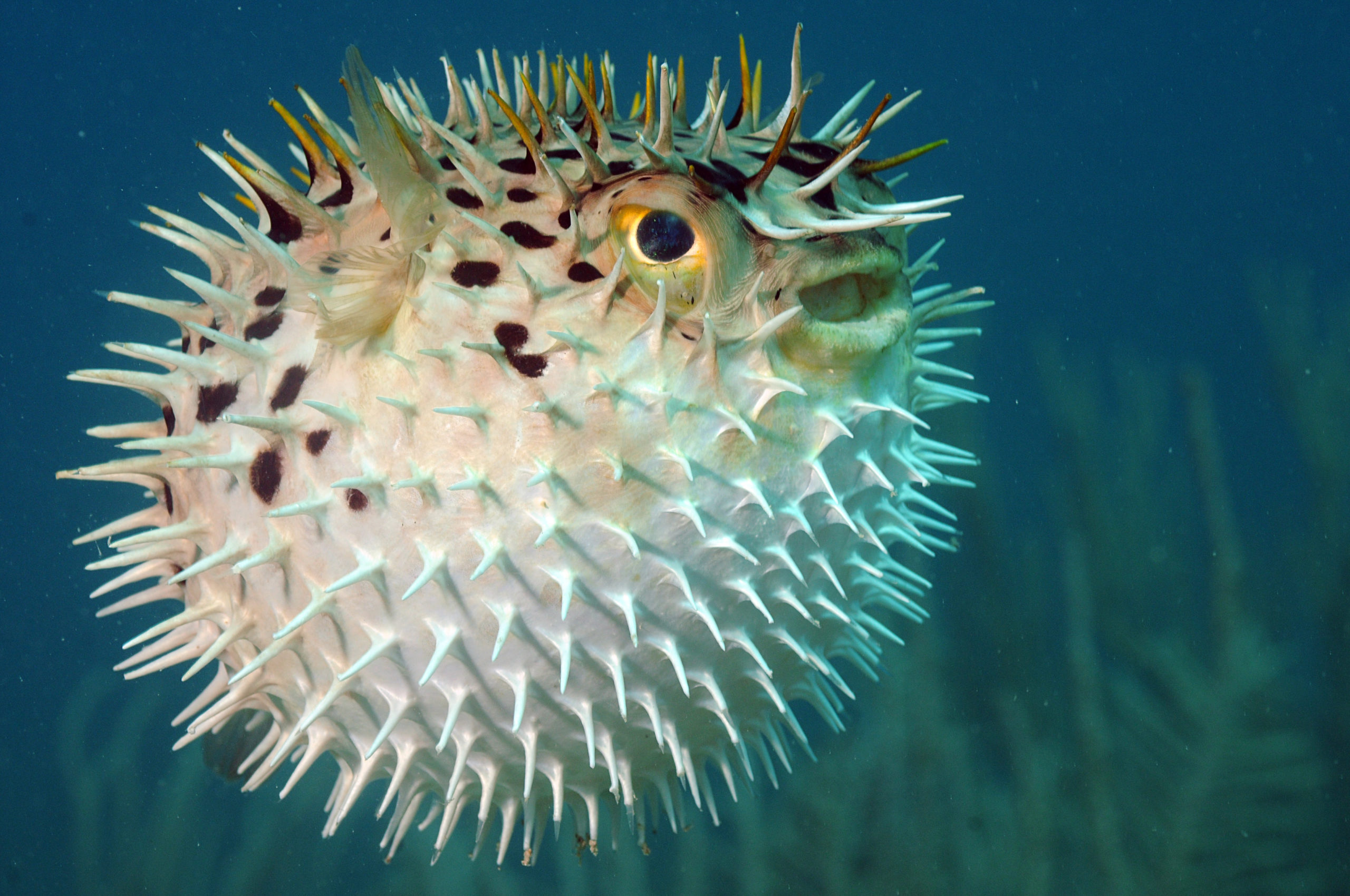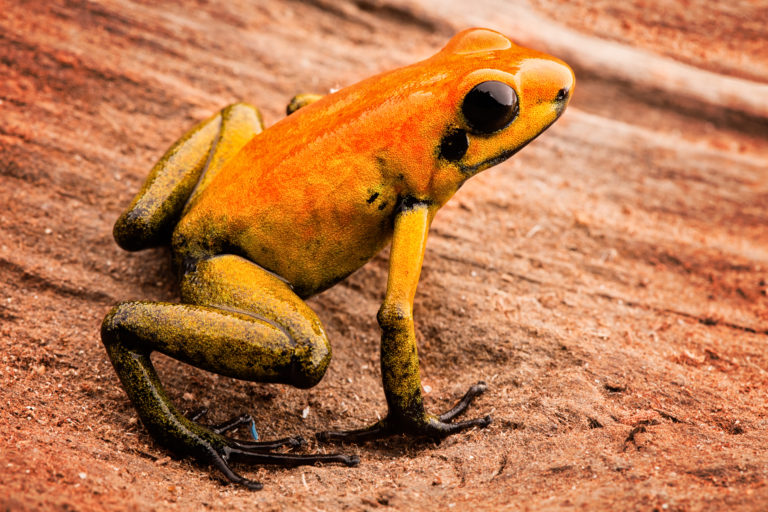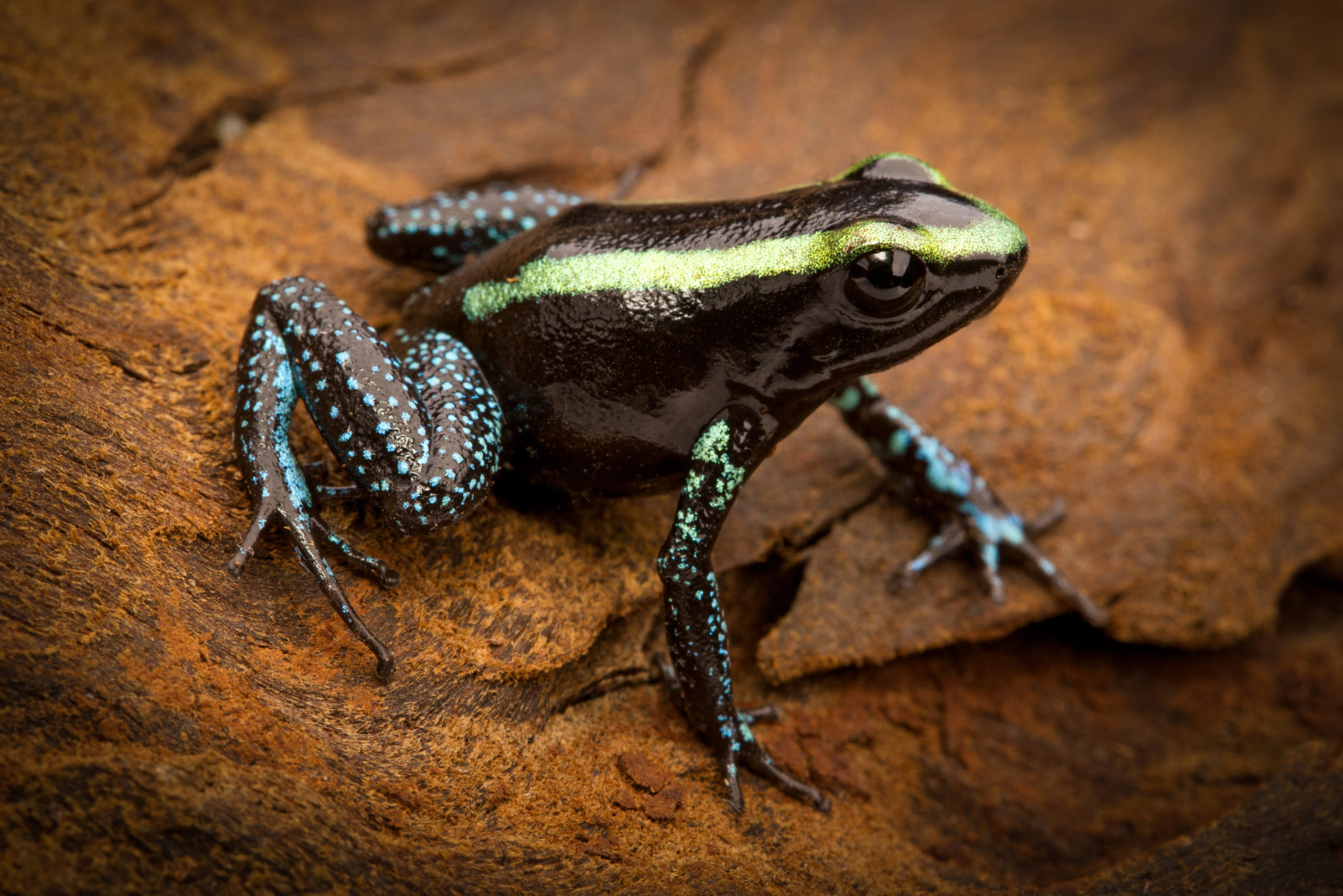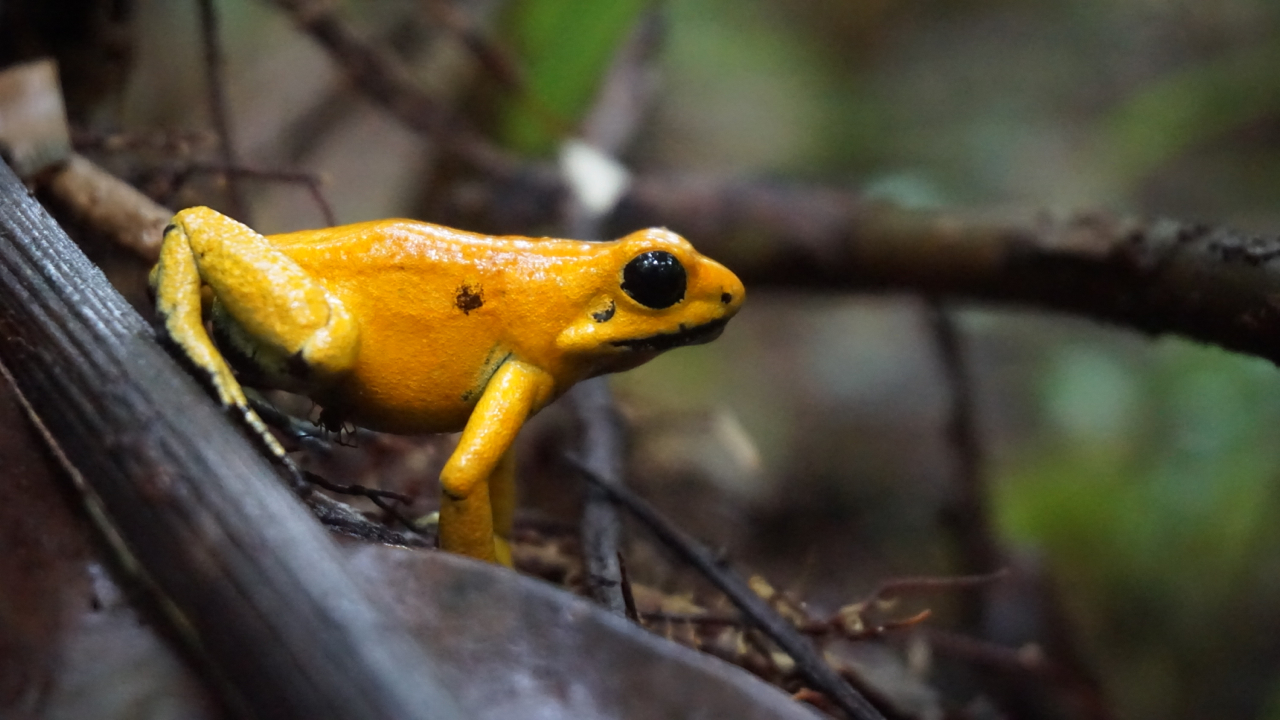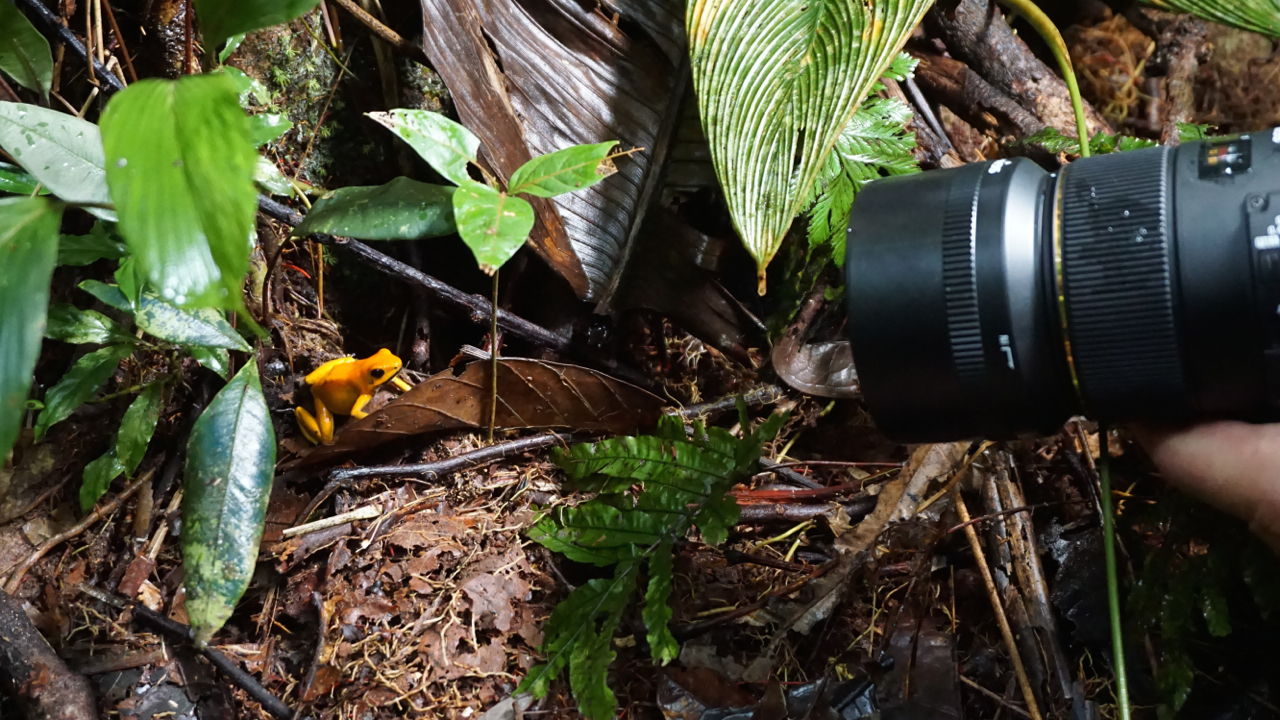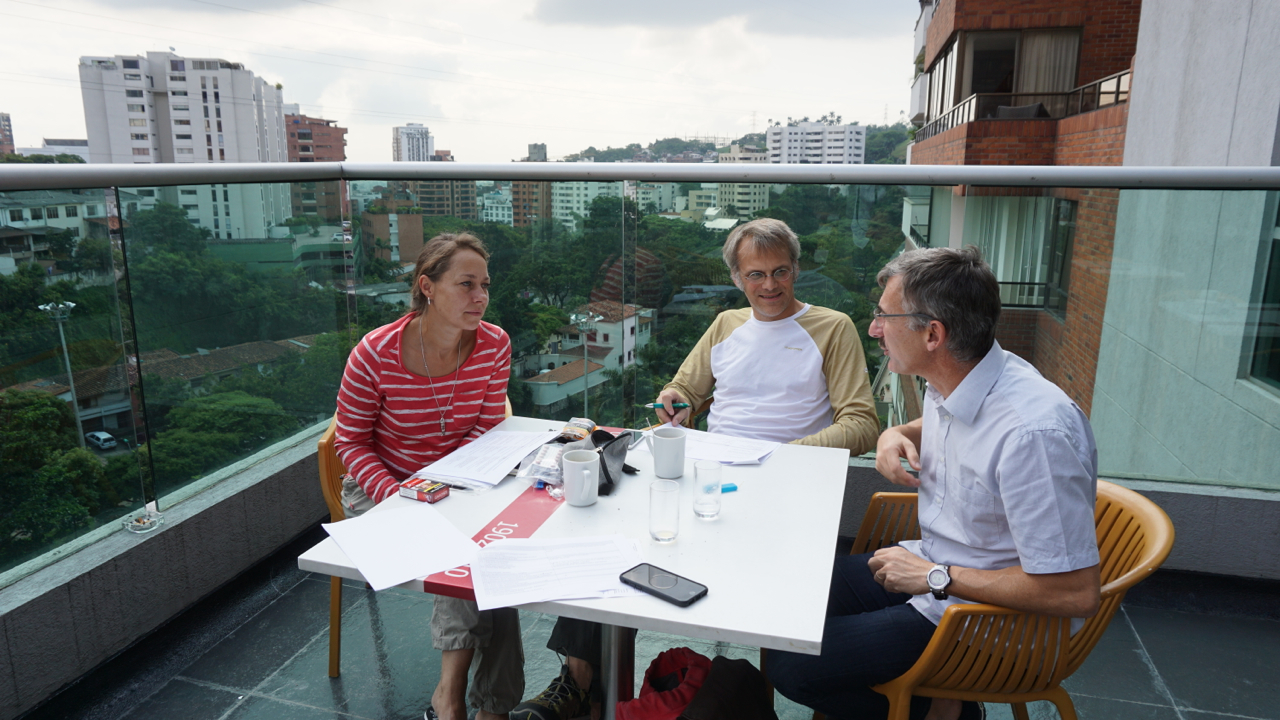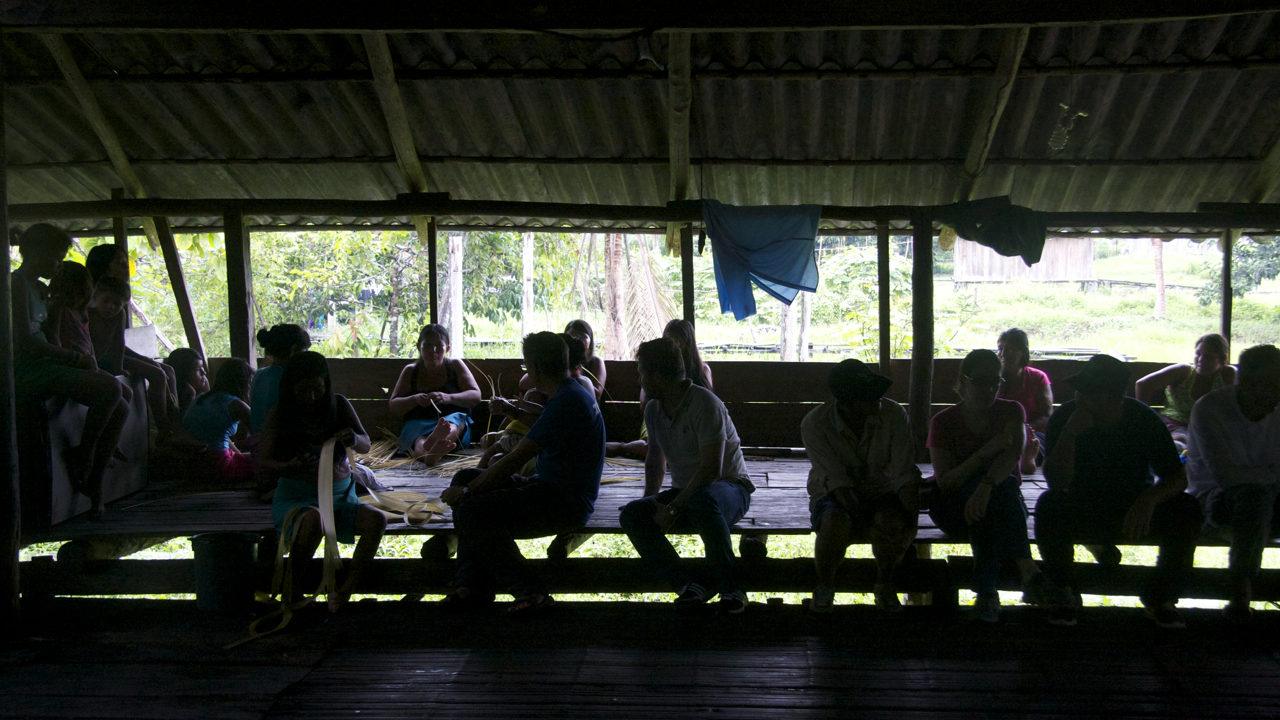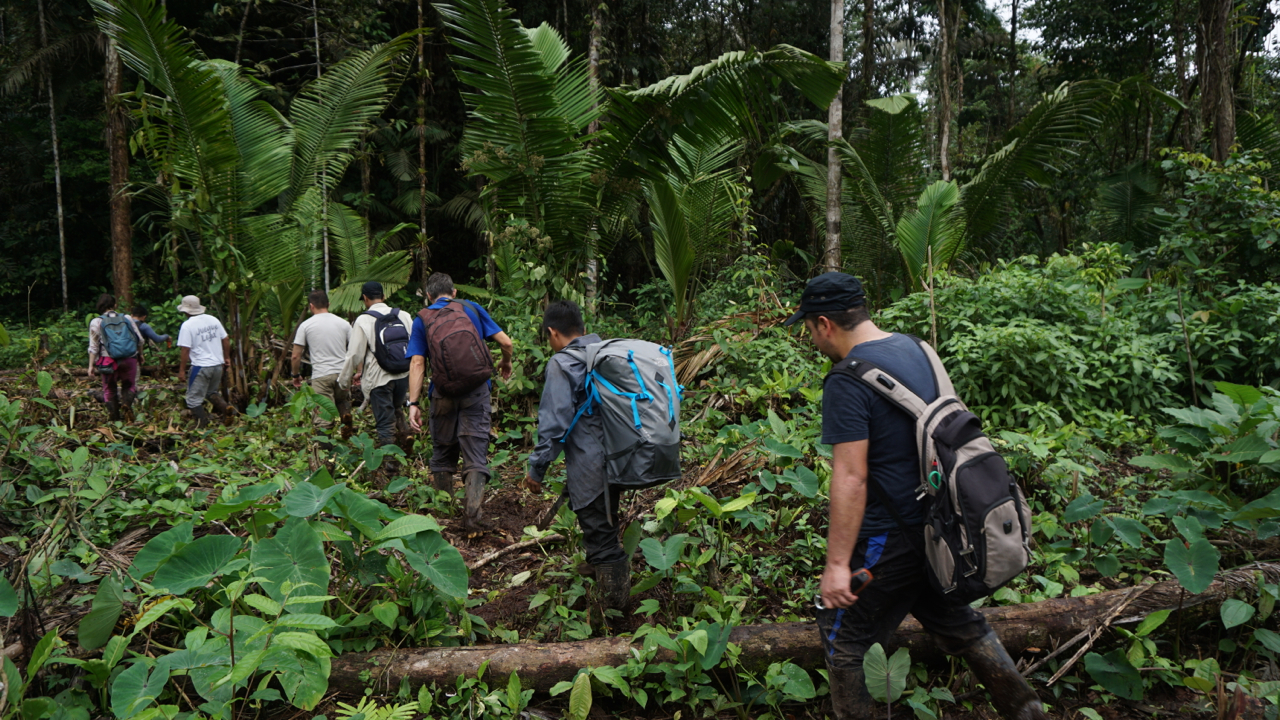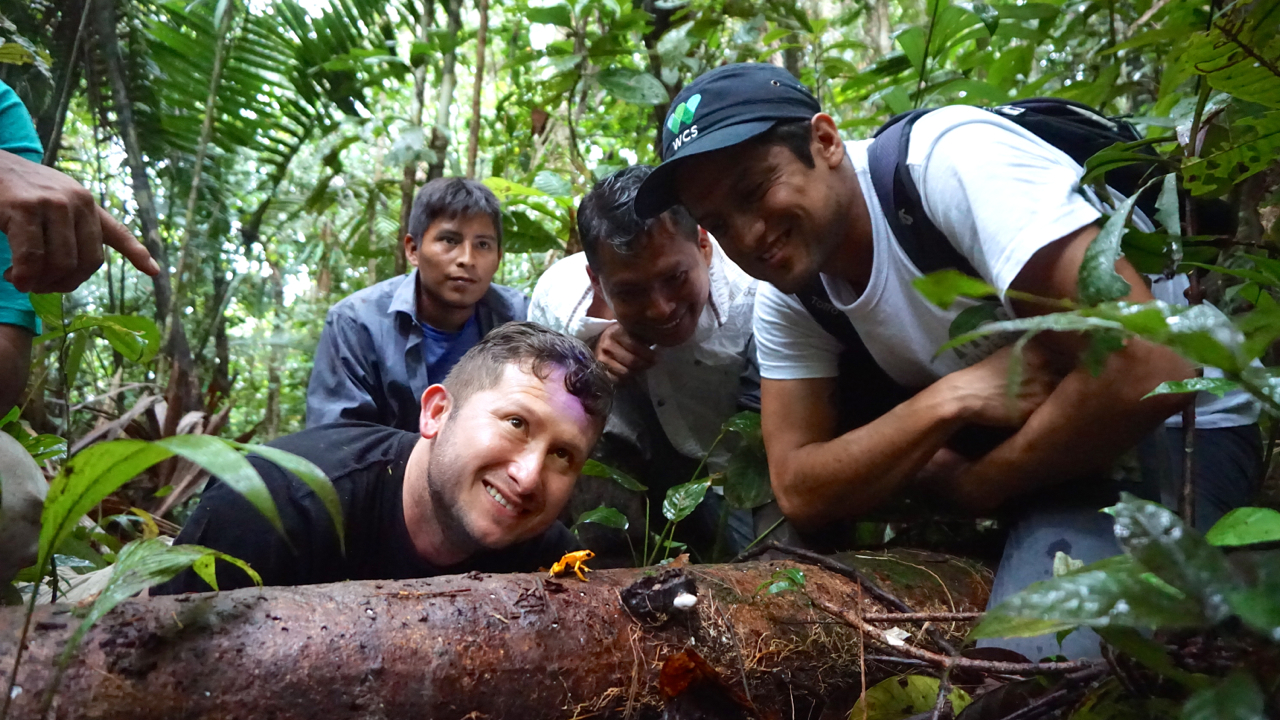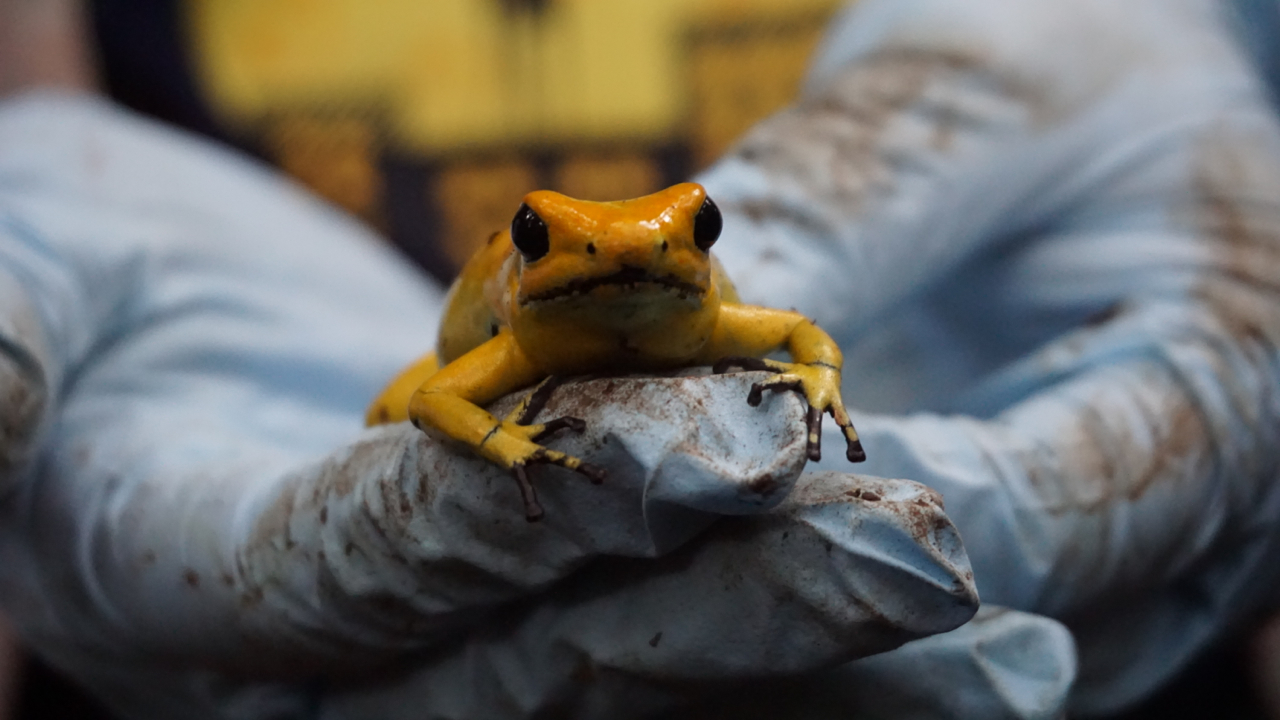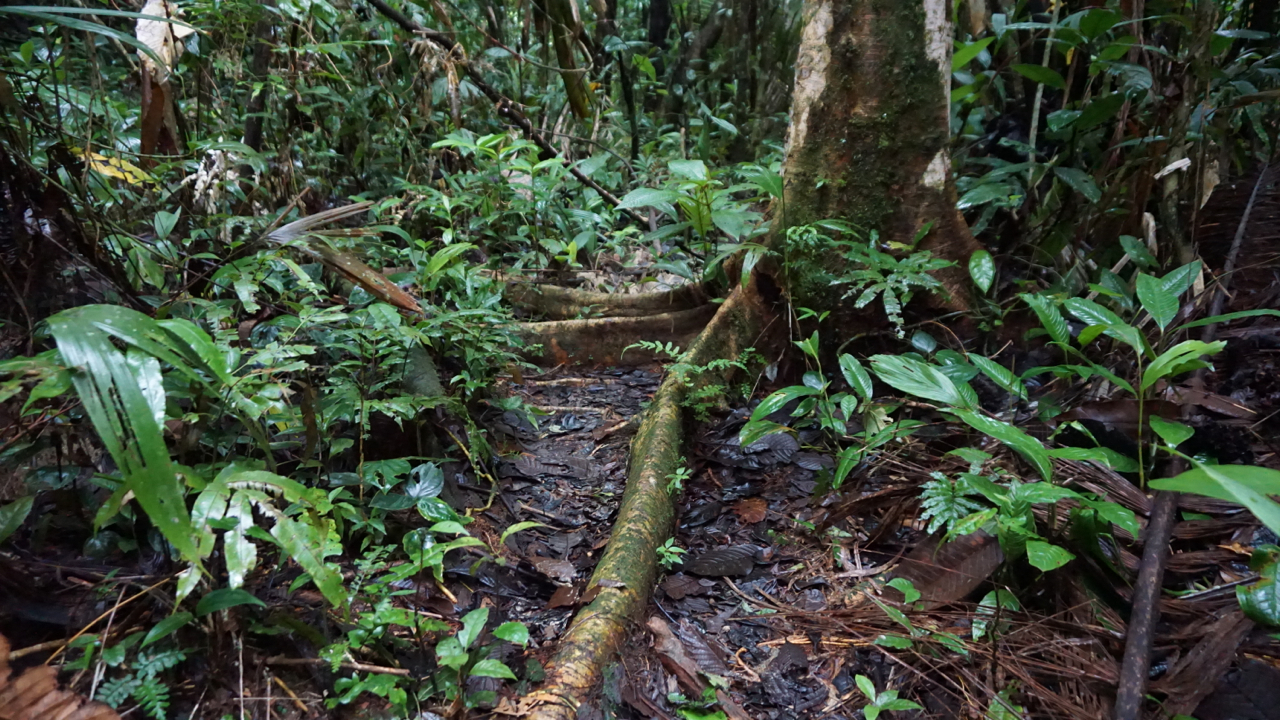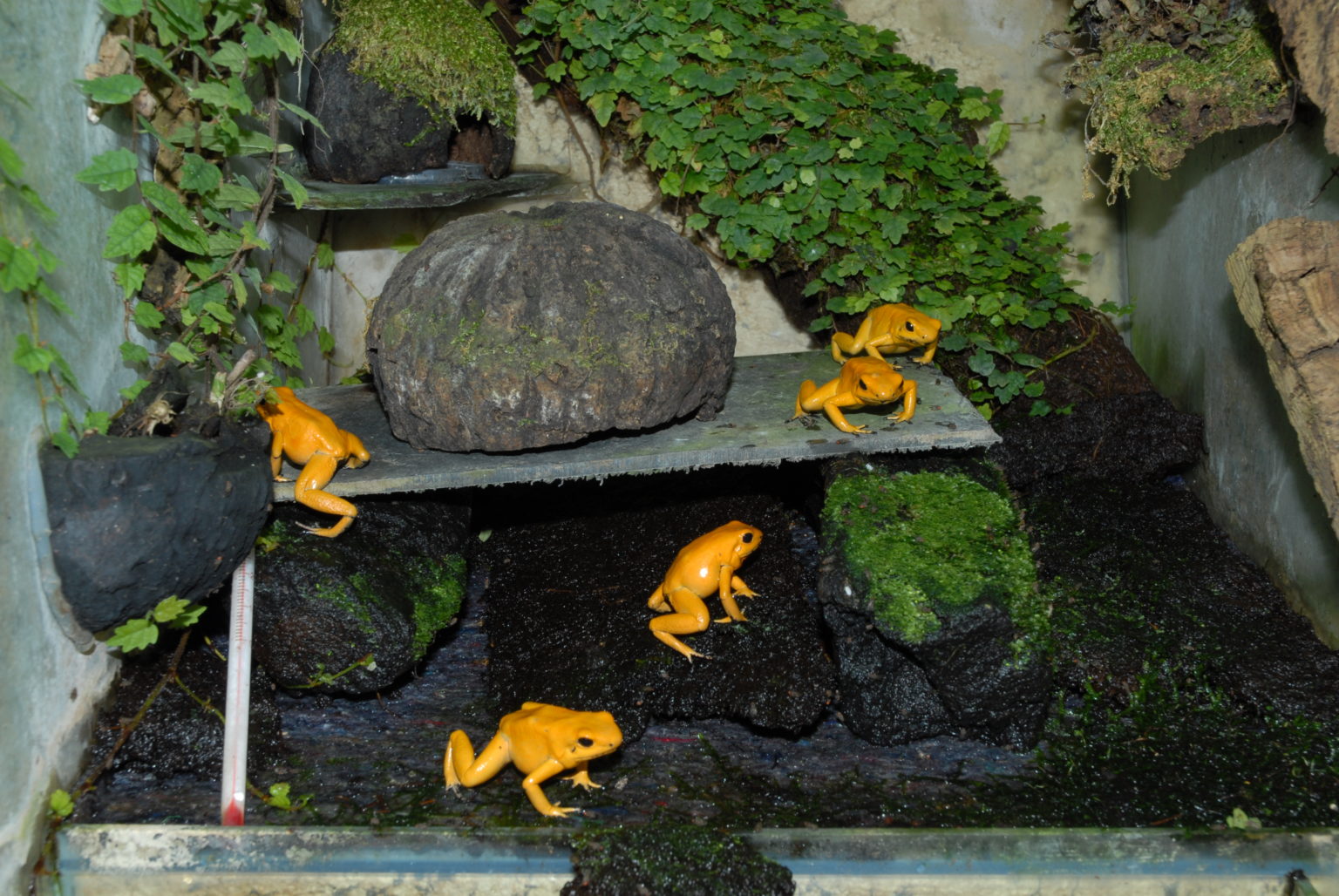Schrecklicher Pfeilgiftfrosch
Phyllobates terribilis
Schrecklicher Pfeilgiftfrosch
Phyllobates terribilis
Zielvorgabe CC
70 Haltende
Stand 11/2025
Zielvorgabe CC
225 Tiere
Stand 11/2025
Zielvorgabe CC
70 Haltende
Stand 11/2025
Zielvorgabe CC
225 Tiere
Stand 11/2025
Man braucht schon ein beachtliches Selbstbewusstsein, wenn man als nicht einmal fünf Zentimeter langes Fröschchen, im Grunde also als lebendes Appetithäppchen, einfach so, mitten am Tag, in aller Ruhe völlig ohne Deckung über den Regenwaldboden hüpft.
Alarmstufe gelb
Der Schreckliche Pfeilgiftfrosch hat jede Berechtigung zu dieser Laissez-faire-Haltung: Er gehört zu den giftigsten Tieren der Welt. Mit der Giftladung, die er mit sich herumträgt, könnte er glatt 22.000 Mäuse auf einen Streich töten – oder sechs Menschen. Auf diesen Umstand weist er mit seiner leuchtend gelben Färbung in angemessener Deutlichkeit hin. Besser nicht anfassen!
Leben und sterben lassen
Das Froschgift
Batrachotoxin heißt das Gift, das der Schreckliche in seinem Hautsekret vorrätig hält. Übersetzt bedeutet das schlicht „Froschgift“. Aktiv anbringen kann er es nicht, man muss also keine Angst vor dem Winzling haben. Nur runterschlucken sollte man ihn nicht – und besser auch nicht anfassen, denn das Gift kann seine Wirkung auch entfalten, wenn es über kleine Wunden oder Schleimhäute in den Körper kommt. Die kolumbianischen Ureinwohner im Chocó, wo der Frosch zu Hause ist, machten sich diese Eigenschaft zu Nutze. Sie sammelten die Frösche statt mit Schutzhandschuhen mit Blättern ein, hielten sie in einer Art Stegreif-Terrarium in geflochtenen Körben mit Laubstreu und strichen ihre Pfeile über die Froschrücken, um diese für die Jagd zu vergiften. Getroffene Vögel oder Affen fallen umgehend vom Baum, wenn ein solcher Giftpfeil sie erwischt. Die Frösche aber wurden nach getaner Arbeit wieder in die Freiheit entlassen.
Besuch bei den Giftzwergen
Kein Schutz gegen Kettensägen
Auf diese Weise hat der Schreckliche Baumsteiger sein von Natur aus sehr kleines Verbreitungsgebiet vermutlich sogar erweitert – als lebender Giftlieferant und temporäres Haustier wurde er vom Menschen in andere Gebiete gebracht und konnte sich so wohl mindestens einen neuen Lebensraum erschließen. Das nutzt ihm aber nichts gegen seinen ärgsten Feind: die Kettensäge. Die Abholzung der Regenwälder schreitet auch im entlegenen Nordwesten Kolumbiens in beängstigendem Tempo voran: um wertvolles Holz zu gewinnen, Platz für Landwirtschaft zu schaffen oder Bergbau zu betreiben. Das mit weniger als 1.500 Quadratkilometern Ausdehnung ohnehin sehr kleine Verbreitungsgebiet mit nur fünf bekannten Fundorten dieser Art steht unter massivem Druck. Da nutzt ihm alle abschreckende Färbung nichts – dieser einmalige Frosch droht heimatlos zu werden.
Obwohl er so leicht gezüchtet werden kann, fehlt es bislang an einem koordinierten Zuchtprojekt
Giftküche ohne Zutaten
Sowohl in Zoos als auch bei privaten Froschzüchtern ist der Schreckliche Pfeilgiftfrosch schon lange eine beliebte und häufig gezüchtete Art. Ihre Halter schweben übrigens in keinerlei Gefahr – einmal aus dem Regenwald entnommen, verlieren die Frösche ihre Giftigkeit allmählich. Nachzuchttiere sind vollständig ungiftig. Der Grund: Der Frosch kann sein „Froschgift“ gar nicht selbstständig herstellen. Er benötigt dafür Substanzen, die er über seine Beute – Ameisen, Milben, Tausendfüßer, Käfer – aufnimmt und dann erst zum Batrachotoxin zusammenbaut. Futtertiere in der Terraristik verfügen darüber nicht, weshalb der Frosch seinen Schrecken rasch verliert.
Nachzuchten Schrecklicher Pfeilgiftfrösche im Terrarium – eine Hoffnung für die stark bedrohte Art. © Heiko Werning
Backup im Terrarium
Obwohl er so leicht gezüchtet werden kann, fehlt es bislang an einem koordinierten Zuchtprojekt, bei dem die genetische Vielfalt der Reservepopulation ebenso Beachtung findet wie mögliche Vermischungen verschiedener Formen. Citizen Conservation arbeitet daran, eine solche koordinierte Zucht aufzubauen, und bemüht sich auch um die Klärung des genetischen Hintergrunds der bei uns gepflegten Tiere, um diesen in jeder Hinsicht einmaligen Frosch so zu erhalten, wie er sich im kolumbianischen Regenwald nun einmal entwickelt hat: schrecklich schön!
Für Haltende
Basisinformationen zu Biologie und Haltung
Auch für Einsteigende in die Haltung von Pfeilgiftfröschen geeignet. Benötigt wird ein mittelgroßes, konstant feucht-warmes, gut bepflanztes Regenwaldterrarium. Gefüttert wird mit Fruchtfliegen, kleinen Grillen u. Ä. Aufzucht der Larven am besten einzeln in kleinen Wasserbehältern.
